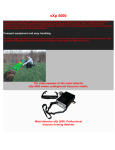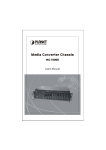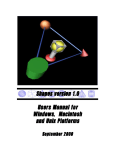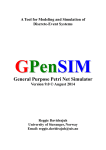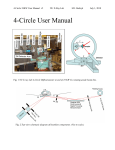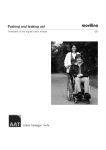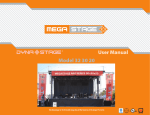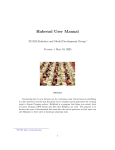Download Beachtown
Transcript
B E A C H T OW N AND THE ABUSES OF DISORDER by Roger Connah SUMMER2008.cite 24 B eachtown is a new seaside development emerging out of the sand on Galveston’s east end. Designed by the Miami architecture firm, Duany Plater-Zyberk and Company, who were planners for the much acclaimed Seaside beach town in the Florida panhandle that gained much exposure as the setting for Peter Weir’s satirical film The Truman Show, Beachtown Galveston is a mixed-use development patterned on new urban ism principles. Beachtown seeks to create a traditional, protected vision of life from a bygone era. The architecture draws from the Classical, Vernacular, and Victorian styles typical of historic districts in Galveston, Charleston, and New Orleans. Beachtown was founded by developer Tofigh Shiraz in 1980, and will eventually cover 125 acres of Galveston Beach property, most of it in the front line for a hurricane event and below Galveston’s seawall. Builders are required to meet strict construction standards to protect against damage from natural forces. For example, many of the buildings are framed using BluWood®, a treated lumber resistant to uncontrolled moisture absorption, mold, fungus, and termites. Roger Connah, a writer on art and architecture and teacher based in Ruthin, North Wales, visited Beachtown with Bruce Webb this spring shortly after ROGER CONNAH completing a six-month writing assignment in Karachi, Pakistan. T H E older man—faded, wrinkled wash, blue t-shirted in Sunday shorts, graying hair, furrowed skin—leans on the white railings of the dune walk already erected in Beachtown Galveston. The site, at present ghostly and adventurous, could just be as exciting at this moment as it will ever be. When the Renderers move in and the prescribed density is achieved, chained to a pattern-book of order and dimension, the void will not be the open plots currently on show, but the milk-float and Brighton environment up ahead in the distance. “We thought about buying one,” the man’s younger curly-haired friend says, “but you know, guys, I mean look at it, guys, you’d be living in shanty-land, and,” he pauses to make an effect he doesn’t need, “when the wind blows…poof it’s gone…driftwood city…” “No thank you,” his partner agrees, “we thought about it, really we thought about it. There’s even another development like this up in Hitchcock, called Harbor Walk, but guys, guys, who wants a Hitchcock Texas postal address?” Postal address architecture isn’t a new idea, nor is designing a community to look instantly freezedried. But the sound of Hitchcock or Keaton, Texas appeals more to this observer than Beachtown Galveston. Nearby an all turquoise house is rising off the sand, poised on 20-foot-high concrete columns, its cladding half covering the wooden frame. A small golf buggy approaches the building, pausing to show a prospective buyer named Tracy the “turquoise house.” He stops upon noticing another visitor looking up and photographing the rather Gordon Matta-Clarkish effect of deconstructed wood and building board. “Are you interested?” he asks. “Well, yes,” the visitor replies, “I kind of like the turquoise. Great color...great gashes in the building, super contradiction, superimposition!” “What?” the salesman says, “Oh, you can’t have that color; that’s the undercladding. You can only have certain colors. But sure, come by the Control Office this afternoon and I’ll show you our pattern book.” “Look Mummy, an albatross!” Tracy’s daughter squeals, and the golf buggy shoots off to show mother and daughter the other beginnings of Beachtown. Stilt house under construction, Beachtown, 2008. SUMMER2008.cite 26 The drama of our existence today is cyclical, from the dream of nature to the fear of nature. The idea of resisting terrifying futures on the edge of the Gulf of Mexico is a gamble most home-owners would choose to ignore. Insurance companies will not, and in a country that cannot sneeze for fear of litigation by the victim, the stakes for this sort of dream are high. When the art of happiness is narrowed to philosophers‚ soundbytes, Feng Shui, high definition television, and anti-cholesterol medicine, architecture shifts to offer the type of society and the imagined community missing in other parts of life. A beach town can be more visions in one; not only the fortified structures to avoid nature’s advance, it can as well become the theater for organized life. Six for one, this is also the locked condition for open minds, the narrative for adventure within the willed community of candy-floss charms. The patterns for this nostalgia are provided by the forms of Classical Dementia, where the façade consultant is Buster Keaton rather than Brad Pitt or George Clooney. We can accept the Beachtown rhetoric of course. It’s as useful as speaking highly of someone speaking highly of you; it’s a spiral of the willed kneeling in front of the willing and praying for life to be ROGER CONNAH HOMELAND INSECURITY safer, calmer, and less bothersome elsewhere. The fingers too fat for the Blackberry and PDA’s to txt back to ground control wear T-shirts instead: “I love Beachtown, it’s so contrary!” And the contrarians always spot the funkiness and they use it to reverse some of the agony of high architecture. And to legitimate postmodern confections of timeless symbols and of displaced ornamentation. But high architecture too often does the same and lets ornament through the back door. LEFT: The author on Clifton Beach, Karachi, Pakistan, 2007. Beachtown rendering, East Seaside Drive. BELOW: The last time I found myself on a beach was in Karachi, Pakistan. Clifton Beach is on the Arabian Sea, and by day, a touch festive, a touch fearsome. To the right, a long promenade, a riding school, and the hold-your-noise stretch where pollution reaches its own heights. Clifton Beach to the left is a touch unbalanced, lodged as it is in the history of its imperial name, its position in the politics and fear of that city. An unfortified space, it suspends its British history and enters the personal history of its strollers. At night, fear is stranded. Anxiety closes off and moves to other parts of the fortified city of Karachi as floodlights illuminate the beach. There, glistening, the rippled sand catches the retreating water a hundred and fifty meters from the promenade. The ordinary architecture of the city meets—if you wish to use the word —the soul. Hawkers, strollers, scavengers, Afghani refugees, and all sorts of other beach-drifters pass. Their sounds blend with other joyous activity and ingenious small worlds become larger than life. A curious psycho-acoustics at work at the edge of the sea makes this space democratic in a welcoming way. You can observe the beach activity by camel or from horseback, to the immense delight of the young boys who lead them. Young girls cruise in the semidarkness, out of sight of parents. Elderly ladies walk the littoral and children thread in and out with sweets and rock candy. You cannot help but appreciate the energetic public life within the immense constraints in a difficult part of the world where the surprise attack or bomb might go off just about anywhere. Whether by design or not, this beach is for life. When trying to find an image of this Karachi beach on the internet, the most obvious picture of the fading light on the rippling water comes up, but the crowds are outside the frame and a censoring script slashed across the image renders it unusable and uncopyable. That slash is Beachtown, where the dune walks are locked, only homeowners get keys, and the beach is not for public use. ENTER THE RENDERERS Quite possibly, even the kandy-kolored, tangerine dream-flake Beachtown existence cannot be controlled in the way the New Urban Guild requires. The patterns may be stretched out as far as the eye can see in the wallpaper book back in the white cabin sales office, but the user’s manual is not actually brought out. Under the claims of a branded, registered, fortified program, what we do learn about is the guarantee of high standards for Beachtown homes: Beachtown is the first community in Galveston to apply the Fortified...for safer living® program to home construction. This national inspection-based initiative has been developed by the Institute for Business and Home Safety and sets exacting standards to make homes better able to resist natural hazards such as wind and water. Fortified homes are rated to withstand 130-mile-per-hour winds as well as water penetration. The program has been adapted to the Galveston environment for use at Beachtown, where certified, fortified East Village beachfront homes in the base zone have robust concrete framing and massive foundations. They are also built at least two feet above FEMA’s flood elevation standard. Fortified is such a safe, convincing word, and yet it’s hard to read this literature and not wonder why these standards are not, literally, even higher. Beachtown Galveston is sited on a flood plain, one of those unnatural zones in the Gulf of Mexico where nature may eventually take its revenge on the land. We have seen this recently throughout the world as whole regions are overwhelmed by forces beyond us. Two feet above flood elevation is small potatoes frankly when the unpredictable hits; two feet is knee high to the grasshopper that becomes a hurricane. Our regulations can ensure standards, but the conditions are changing. Our desire to meet requirements might promise a controlled community but there is no authority that can announce that global warming will not send waves bigger than those imagined in 100 year or 200 year strategies. A Category 4 hurricane alone could raise the tide to 22.4 feet topped by three to five-foot waves and winds of 150 miles per hour. The houses will not only tumble, nature’s image will shatter them into the slow-motion cinema of blue-stained skies. FEAR-MONGERING Is this fear-mongering dampening the dreams of those who wish to live in a beach town on the edge of the Gulf of Mexico? Maybe. But fear mongering goes two ways; it bounces back from the mirror of optimism of a designed life and secure existence. It is quite possible that Beachtown Galveston is the ultimate route to one of those well-known funkifications of architecture today. The New Urbanists are 27 SUMMER2008.cite TOP: COURTESY ROGER CONNAH; BOTTOM: COURTESY IUI PROPERTIES NOT FOR PUBLIC USE LEFT: ROGER CONNAH; RIGHT: COURTESY IUI PROPERTIES SUMMER2008.cite 28 two miles. Even if we realize that advertising language cannot really convince us, then the media circus may. convinced that a double-breasted suit and “The Coastal Living Magazine 2008 Idea House, under construction at Beachtown, is being built using Wallace and Gromit cuff links make up for the BluWood. In addition to the almost 4,000-square-foot Idea House, BluWood is being used for beachfront and ever-changing architecture of the magazines and lagoon-front homes and townhomes.” And if the media circus does not quite convince us then the celebrity the pattern-language world. The result is a more might: “Recently, Brad Pitt and his team of architects chose BluWood for his green housing project in New ordinary and everyday sort of alchemy. Beachtown is also social therapy, where makeover Orleans, and ABC’s Extreme Makeover Home Edition used BluWood for a new home constructed in South Carolina. Now Beachtown is introducing BluWood to Texas.” I like Brad Pitt—the work he is doing with strategies meet reality television, and become the weakest link architecture. It’s a seductive trend and readily plausible. A fortified existence is flood-proof, criticproof, ethnic proof; it is multi-vitamin tablets and ginseng. But where do you go when the clock on the wall suddenly shifts and the barometer warns of impending disaster? Pack the car and head out on the highway to Austin? Take the lift to the top of the lookout tower? And the picket fence? “It cannot be any picket fence,” the salesman in the white Control Center informs the prospective buyer, “It must ABOVE LEFT: East Beach, Galveston. be one of the picket fences ABOVE RIGHT: Beachtown, Town Center rendering. from the pattern book, look, here see.” community groups to rebuild in New Orleans seems substantial—but how much weight this holds for Such a weight to turn the pages. “I can only let you have one of these books if you buy a house.” The Beachtown living and future architecture is entirely unmeasured. Perhaps that is just its point—an extreme makeover achieves its result but at the same time erases more history however slightly we attempt to hold gift of such architecture is the gift of the displaced; onto it. Our howl, our kandy-kolored, tangerine stream-flaked architecture will continue to attract the gamerevered by worried individuals who wish for the same fortified privilege, pay for it, run from it, laugh show world of private lives and public fear. The empty spaces that appear now, glimpsed through the skeleton legs of half constructions and columns at it, and die from it. In the meantime each owner hitting nothingness, have more spunk and fullness than anything that will be achieved when the site is silverwill be given that special key to access each of the topped and skimmed full of designed houses. Then the void of this sort of planning will be more complete dune walks that lead to the open beach. The new urbanist principles presented in the glossy brochures than any of the structures the architects ever imagined. If Stewart Brand tells us brilliantly how to learn from buildings, we might also recommend this learning from those not quite yet built. and Flash-driven Beachtown website are belied by the physical realities: the closed access to the beach, the absurd fortification of the design, and the placeI F W E T O L E R AT E T H I S , O U R C H I L D R E N ment of the development in a zone that hurricanes WILL BE NEXT will one day reclaim. The nostalgic reproduction of architecture from a bygone era does not connect us to Architects, it is true, often want to speak of the big issues, as if the discipline validates greater anxiety and history when the façades cover up the erosion of pub- expert opinion, but it is unlikely we will turn to the pattern-book makers of Beachtown for future inspiration. Simpson or Southpark cuff links may carnivalize our dress, but this slight flair, this one item of snazz in the lic space and genuine community. Rather than encouraging us to face up to our fears in a meaning- otherwise closed world, can make few claims to be serious architecture. The greening of Galveston’s “Strand” designs a way of life already defined by life under the headphones; the route is internal, the disorder necessary ful way, Beachtown creates an isolated private space to shake the future cannot be reflected in the pattern book. To live the Beachtown dream, a user’s manual that gives the illusion of a safe bubble in which you might start with the following: can live life outside of history. The advertising literature goes so far as to suggest 1. Insert headphones, listen to the soundtrack of a world elsewhere, and close eyes when passing that Beachtown is a “green” extension of the historic through the liminal zones and the sea wall that leads to the edge of Galveston. Strand district, though they are separated by about 2. Ignore the gunfire and open eyes to friendly images of nature. 3. Set up the picnic table in front of the huge virtual wall inside the house. 4. Celebrate life as designed for others. 5. Ignore the GPS for GB Int’l Airport and find your own way. 6. Watch Beachtown blaze on red letter days, have the blazers ready, and the piping in Saltwater Taffy colors. Beachtown is also social therapy, where makeover strategies meet reality television, and become the weakest link architecture. Hanging columns in a house under construction, Beachtown, 2008. S O A F R A I D O F DY I N G Galveston, oh Galveston, I am so afraid of dying/ Before I dry the tears she’s crying/ Before I watch your sea birds flying in the sun/ At Galveston, at Galveston…. The very assemblage of tailored buildings can, in all seriousness, hijack vision elsewhere; it’s the rat in the maze in Karachi influencing the rat in the maze in Houston. This architecture preempts headlines and has no real need to become a TV reality show. We have had the makeovers, the hijacked and the weakest link, which now condition hostility and untidiness in daily behavior. The result of such shows is like this architecture: the last one to remain speaking is not always the last one with something to say and it might be the one wearing the Funky Beachtown T-shirt. Galveston, oh Galveston, I still hear your sea waves crashing/ While I watch the cannons flashing/ I clean my gun and dream of Galveston….And to anticipate the weather balloon that is always out of sight, but never out of mind, we check the near coastal forecasts for the day after the day before: MATAGORDA BAY-GALVESTON BAY- 500 AM CDT FRI APR 4 2008 ...SMALL CRAFT SHOULD EXERCISE CAUTION THROUGH FRIDAY AFTERNOON... TODAY... SOUTHERLY WINDS AROUND 15 TO 20 KNOTS BECOMING WEST IN THE AFTERNOON. BAY WATERS SLIGHTLY CHOPPY TO CHOPPY. A CHANCE OF SHOWERS AND ROGER CONNAH THUNDERSTORMS. TONIGHT... I still see her standing by the water/ Standing there lookin’ out to sea/ And is she waiting there for me? On the beach where we used to run… c






